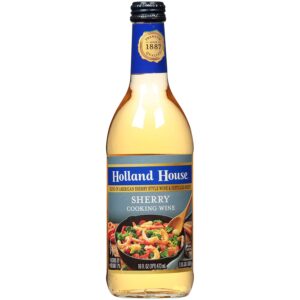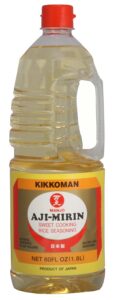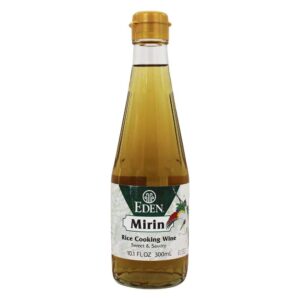If you’re a fan of Asian recipes, you’re probably familiar with rice wine. But what exactly is rice wine, and how can you use it in your cooking? Rice wine is a popular alcoholic beverage in Asian countries, commonly used in both cooking and drinking. It’s made from fermented glutinous rice, where the sugars are transformed into alcohol with the help of yeast.
However, not all rice wines are created equal. In Asian cuisine, different types of rice wine exist, each with a unique color and flavor profile. For instance:
- Huangjiu from China: Used to add sweetness to marinades and a depth of flavor to sauces, Shaoxing wine is the most popular brand in China. Chinese people often use it to marinade meat and poultry or add to Chinese chicken stock or dumpling stuffings for a better taste.
- Tapuy rice wine from the Philippines: This rice wine is made from glutinous rice and a starter culture known as ‘bubod’ made from rice flour and ginger extract. It’s reserved for special occasions and can add an authentic taste to your dishes when used for cooking or marinating.
- Makgeolli from Korea: As the oldest and most consumed alcoholic beverage in Korea, Makgeolli is made from rice using nuruk, a Korean fermentation starter. It has a milder and creamier taste when freshly brewed, and you can brew it at home using various ingredients to create different flavors.
- Sake and Mirin from Japan: Sake is made from rice and water in a brewing process similar to beer. It’s commonly used to marinate meat or fish to eliminate any odor or tenderize meat with its moisture. Mirin, on the other hand, is a sweet Japanese rice wine with a lower alcohol and higher sugar content. It’s mainly used as a seasoning and glazing agent.
Is Rice Wine the Same as Rice Vinegar?
Despite the similar name, rice wine and rice vinegar are two distinct products. Rice vinegar is made by fermenting the sugars in rice into alcohol and then into acid. It’s perfect for salad dressings, marinades, or pickling vegetables thanks to its delicate sweet flavor and lower acidity compared to white distilled vinegar. If you need a substitute for rice vinegar, apple cider vinegar works well.
Substitutes for Rice Wine
If you don’t have rice wine on hand, you can use a substitute that has a similar flavor and texture. However, it’s essential to understand what type of rice wine your recipe requires. Different regions or cuisines have their own preferences or traditions with rice wine. For example, for Southeast Asian cuisines, you can mix apple juice or grape juice with a small amount of rice vinegar.
If you’re cooking Chinese food and the recipe calls for Shaoxing rice wine, you can use an equal amount of pale dry sherry instead. Sherry wines are inexpensive and food-friendly, and you can find bottles labeled “dry” or “pale dry.” Sherry cooking wine lasts longer than regular sherry wine because it’s preserved with salt. Although it’s high in sodium, it adds a little sweet taste to your dish, making it an excellent replacement for Shaoxing rice wine. Consider using one of these two brands:
- Pale Dry Sherry
- Sherry Cooking Wine
In summary, rice wine is a versatile ingredient in Asian cuisine, and understanding the different types and how to substitute it can help you create delicious dishes with ease.
Replace Chinese Cooking Wine With Pale Dry Sherry Or Sherry Cooking Wine
If your cook Chinese food and follow the recipes, the most commonly used rice wine is Shaoxing rice wine, which can be easily bought in Asian grocery store or online (check it out on Amazon).
But if you don’t have access to both or you prefer to use something you already have, that totally works too. You can use an equal amount of pale dry sherry. Remember to find sherry bottles with “dry” or “pale dry” labels. Sherry wines are inexpensive and food-friendly. It is fortified so it lasts longer than regular white or red wine, typically for about a week in the fridge after opening.
Reese Sherry Cooking Wine
It is good to enhance a flavor to a wide variety of dish or sauce. It is only half the size of a regular sherry wine, which is perfect for the purpose fo cooking. It contains 8% DV of sodium. Some people complain it’s too salty, however, it’s a personal preference. Overall, we think it has great value if you are looking for a nice size sherry cooking wine.
Pros:
– Good for all dishes
Cons:
– Maybe too salty for some people
Holland House Sherry Cooking Wine
Holland House sherry cooking wine has a pleasant aroma and adds mild sweetness to the dish. You can use it in various recipes, from Italian pasta to Chinese stir-fries. It is perfect for meat dishes and preparing sauces as well. The taste is more flavorful and abundant than other brands. So it’s a better choice for picky eaters.
Pros:
– Good price and value
Cons:
– None
Replace Japanese Sake with Dry Sherry or White Wine
Sake is one of the well-known dry rice wines from Japan used as a beverage and cooking ingredient. Most liquor stores nowadays sell sake. If your neighborhood store does not have it, try the liquor store next to Costco. You can replace sake with an equal amount of dry sherry or white wine.
Replace Japanese Mirin with Dry Sherry and Sugar
Mirin is a type of sweet rice wine used in Japanese cooking. It can be replaced with an equal amount of dry sherry or sake and some sugar. For example, for one tablespoon of dry sherry, add less than half a teaspoon of sugar. For two tablespoon of sake, add one tablespoon of sugar. Sweet sherry is another option.
Here are a few mirin brands we like:
Kikkoman Manjo Aji Mirin
This 60-ounce bottle beat the price found in Asian grocery stores. It’s such a great deal online. If you are a frequent user, buy this and you won’t regret it. It makes perfect teriyaki sauce or Asian salad dressing. I am sure it will satisfy any need whenever a recipe calls for mirin. It has a subtle sweet flavor and aids browning really well.
Pros:
– Excellent value for the money
Cons:
– Contains corn syrup
We love using healthy ingredients to make healthy food. Eden Foods Mirin has such a nice flavor, but it does not contain any artificial or harmful ingredients. It’s all real stuff. It tastes sweet but does not make the dish overly sweet. It’s well worth the extra money and your tummy will thank you for that! Try this product to make your homemade sushi taste more like the restaurant version.
Pros:
– No synthetic nitrates or nitrites
Cons:
– More expensive




